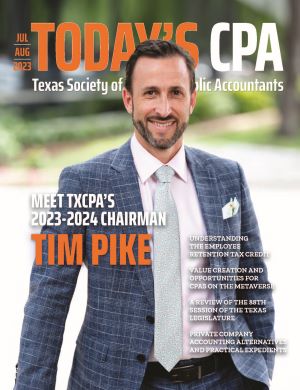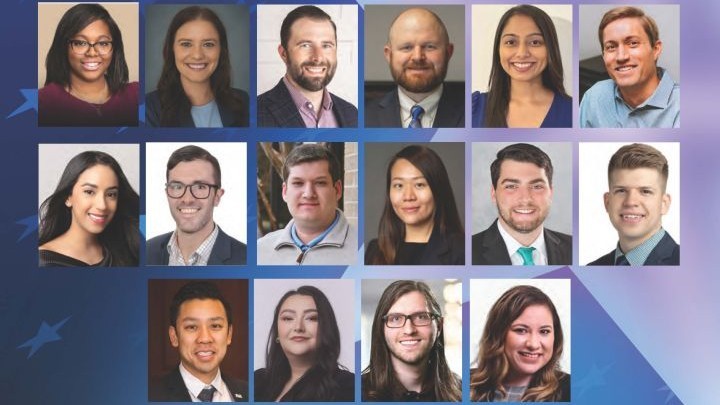July 28, 2023
Understanding the Employee Retention Tax Credit - Preparing Against the Risk of IRS Audit and Tax Litigation
By Juan F. Vasquez, Jr., Victor J. Viser and Tania Albuja
In response to the economic consequences of the COVID-19 pandemic, Congress introduced a series of relief measures, including the Employee Retention Tax Credit (ERC). The ERC is aimed at providing financial relief to employers affected by the pandemic and encouraging them to retain their employees.
As tax and legal professionals navigate the complexities of this credit, it is crucial to understand its application, eligibility criteria, tax treatment and the implication of Circular 230, among other issues. With the infusion of $80 billion to the IRS as part of the Inflation Reduction Act, the IRS has apparently trained approximately 400 agents for the review and audit process of the ERC.
Millions of ERC claims for refund have already been filed with the IRS and paid out, many of which are correct and legitimate ERC claims, but a number of such claims are quite questionable at best. The IRS audits are already underway, and the audit process and corresponding ERC litigation will take years to resolve. The ERC is a refundable credit against payroll taxes for certain employers whose operations were fully or partially suspended due to COVID-19-related governmental orders (the Governmental Order Test) or who experienced substantial declines in gross receipts (the Gross Receipts Test).
The ERC was first introduced in the Coronavirus Aid, Relief, and Economic Security Act (CARES Act); later updated and expanded by the Taxpayer Certainty and Disaster Tax Relief Act of 2020; expanded, extended and codified by the American Rescue Plan Act of 2021; and finally terminated as of September 30, 2021, for most employers by the Infrastructure Investment and Jobs Act.
For CPAs and other practitioners, understanding the ERC is essential to ensure that employers are eligible for the credit, claim the correct amount of credit, and are prepared for an IRS audit and potential litigation. Understanding the nuances of this relief can help businesses take full advantage of available tax credits, while ensuring they are compliant with applicable tax law.
This article will provide an overview of the ERC and discuss key considerations for CPAs and other practitioners in advising employers on this credit.
The Differing Application of the ERC in 2020 and 2021
Certain eligibility rules and calculation rules differ between 2020 and 2021. Therefore, it is important to understand how these differences affect employers’ ability to claim the ERC. It is also important to note that when the CARES Act initially proposed both the Paycheck Protection Program (PPP) and the ERC, employers were initially eligible only to claim the PPP or the ERC. Subsequent legislation removed that restriction, making the ERC available to the millions of businesses that had previously received the PPP.
2020 ERC
In the 2020 calendar quarters, employers can claim the ERC for qualified wages starting March 13, 2020, if they experienced:
- a full or partial suspension of one or more business operations due to COVID-19-related governmental orders; or
- a 50% decline in gross receipts in a calendar quarter (2Q-4Q 2020) compared to the same 2019 calendar quarter.
The 2020 ERC is equal to 50% of up to $10,000 in qualified wages paid per employee throughout 2020. Because the $10,000 maximum is allocated across all 2020 quarters, the employer may only receive an ERC of up to $5,000 per employee in total for 2020.
2021 ERC: 1Q and 2Q
For the first and second quarters of 2021, employers can claim the ERC if they experienced:
- a full or partial suspension of one or more business operations due to COVID-19-related governmental orders; or
- a 20% decline in gross receipts in a calendar quarter compared to the same 2019 calendar quarter.
Notably, the 2021 ERC makes the Gross Receipts Test easier to satisfy by reducing the required decline from 50% to 20%. Additionally, the 2021 ERC expands significantly the potential credit amount. The 2021 ERC is equal to 70% of up to $10,000 in qualified wages paid per employee, per quarter. The resulting potential credit amount is up to $7,000 per quarter.
2021 ERC: 3Q and 4Q
We distinguish the third and fourth quarters of 2021 from the previous quarters because the third and fourth quarters are separately governed by IRC Sec. 3134.
For the third quarter of 2021, the ERC eligibility requirements are the same as those for the first and second quarters of 2021, except that an additional category is included: recovery startup businesses. A recovery startup business is an employer that:
- does not satisfy the Governmental Order Test and the Gross Receipts Test;
- began carrying on a trade or business after February 15, 2020; and
- averaged annual gross receipts for the three tax years preceding the quarter in which it claims the credit of no more than $1 million.
The requirement that annual gross receipts be averaged over three tax years does not appear to consider that recovery startup businesses will not have three tax years of data given the February 15, 2020 cutoff. The applicable test for recovery startup businesses is then found in IRC Sec. 448(c)(3), which requires the annual gross receipts to be evaluated over the period during which the entity was in existence.
Because 2020 and/or 2021 will be short taxable years, the annual gross receipts are calculated by multiplying the respective 2020 and/or 2021 gross receipts figures by 12 months and then dividing the result by the number of months in each short taxable year. 2020 will be a short taxable year because the employer must have started operations after February 15, 2020. 2021 will be a short taxable year because the period ends June 30, 2021 (for 3Q 2021 ERC) and September 30, 2021 (for 4Q 2021 ERC).
For the fourth quarter of 2021, only recovery startup businesses are eligible for the ERC. Originally, employers that satisfied the Governmental Order Test or the Gross Receipts Test were also eligible, but they were retroactively made ineligible by Congress. Accordingly, particular attention should be paid to an employer that has claimed or intends to claim the 4Q 2021 ERC to ensure that they are indeed eligible as a recovery startup business.
The maximum credit amount available for each employee is the same as the first and second quarters of 2021, 70% of up to $10,000 in qualified wages per employee (in the third quarter only), except that recovery startup businesses are eligible for up to $50,000 in total per quarter.
Eligibility Criteria
To be eligible for the ERC, employers generally must satisfy the Governmental Order Test or the Gross Receipts Test. While a number of employers may qualify under both tests, it is only necessary to qualify for one of the tests to determine eligibility.
Read more about the Governmental Order Test and Gross Receipts Test.
Tax Treatment
The ERC can have a significant impact on an employer’s tax liability, reducing the amount of taxes owed or potentially resulting in a refund. Nevertheless, employers must understand both federal and state tax consequences of claiming the ERC to accurately report their taxes and avoid the imposition of penalties.
Read more about the federal and state tax treatment.
Professional Responsibility
Practitioners who provide advice on the ERC or sign returns that claim the ERC must comply with Circular 230. Circular 230 is the set of rules issued by the IRS that governs the practice of tax professionals. Specifically, in addition to providing guidance related to professional responsibilities and ethical requirements for professionals who practice before the IRS, it requires practitioners to exercise due diligence when preparing their clients’ returns.
Read more about the issues related to professional responsibility.
Understanding the ERC
The ERC is an important and popular COVID-19 relief measure. Due to the credit’s complexity, practitioners must ensure they understand all aspects of the ERC, including its application, eligibility criteria and tax treatment, as well as each practitioner’s responsibilities under Circular 230. With proper understanding, practitioners can help ensure that their clients receive the full benefit of this helpful tax provision and be prepared against a potential IRS audit and tax litigation.
About the Authors:
Juan F. Vasquez, Jr. is a Shareholder in the Houston and San Antonio offices of Chamberlain Hrdlicka and serves as the Chair of the firm’s nationwide Tax Controversy Section. He concentrates his practice on federal and SALT controversy matters. He also serves as an Adjunct Professor at the University of Houston Law Center, where he teaches Tax Controversy & Litigation and Tax Procedure & Practice.
Victor J. Viser is a tax associate with Chamberlain Hrdlicka in San Antonio. His practice focuses on federal, state and international tax planning and controversy matters. He is a graduate of New York University School of Law with an LL.M. in Taxation and holds a J.D. from the University of Virginia School of Law.
Tania Albuja is an associate in the Tax Controversy Section of Chamberlain Hrdlicka in Houston. She received her J.D. from the University of Houston Law Center and her LL.M in Taxation from the Georgetown University Law Center. She assists with a wide range of federal tax controversy and litigation matters at all stages before the IRS and federal courts.

















